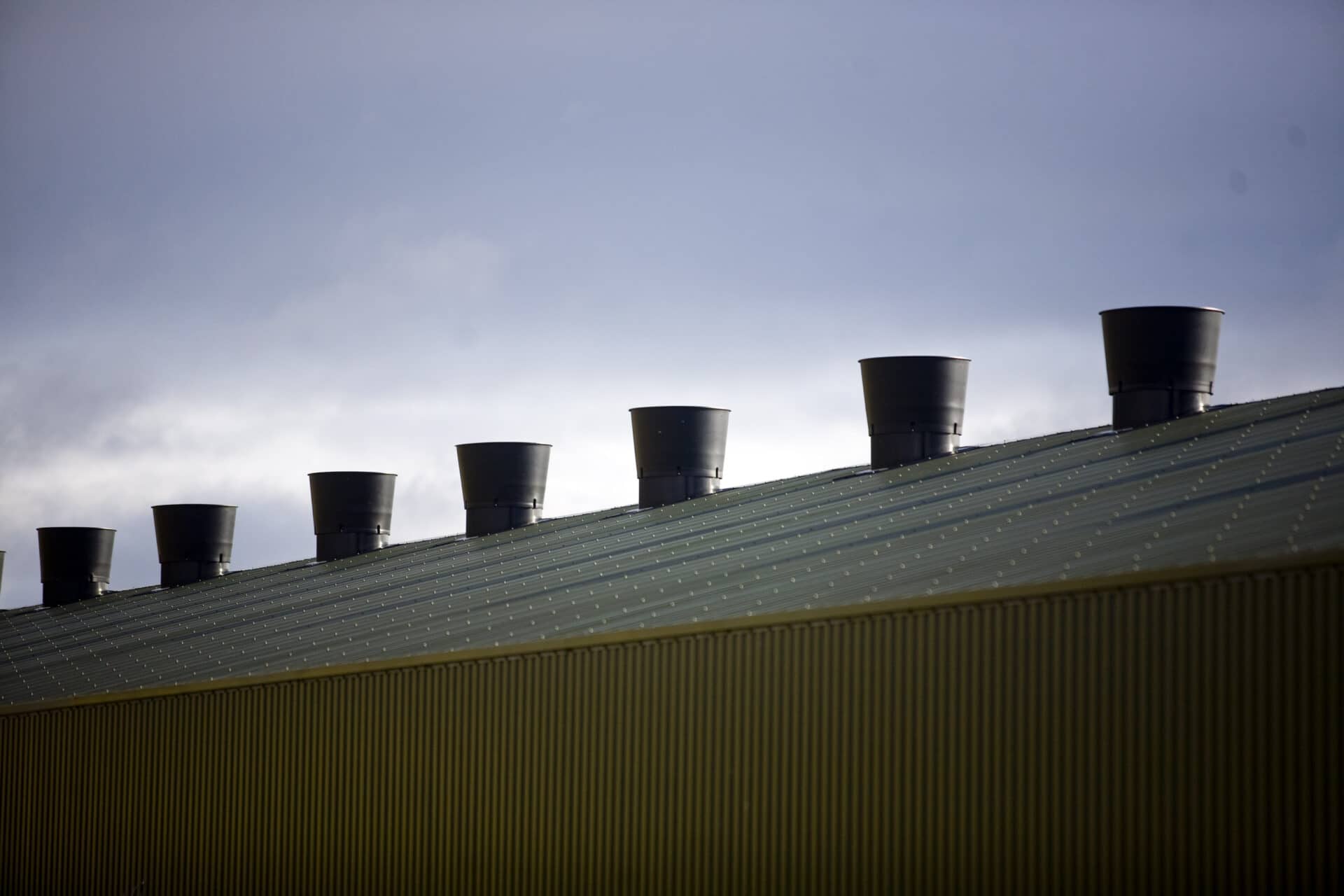Weather the storm, keep out the wind!

How to keep the wind from influencing the indoor environment of your poultry house. There have been a few challenging storms in late February 2022. These storms have brought us loads of rain, wind gusts of over 100mph (ca. 161 km/h), and even hail. With the weather being increasingly wild due to climate change, it is a smart move to protect your livestock and keep the storms at bay.
With the ventilation system, there is an open connection between the inside and outside the house, though this does not necessarily have to cause difficulties with climate management. Keeping out the wind, and maintaining control over the indoor climate of your house, is a matter of both high-quality ventilation equipment and computer settings.
Start by making sure you are using the right computer settings to quickly adapt to changes in the climate. Especially with storms coming in, adaptability is key. On the matter of hardware, there are a few measures that significantly help protect your animals against disruptive weather influences.
For air inlets,
TPI-Polytechnics advises installing wind hoods equipped with light traps on the outside of the house. The wind hoods protect against both wind gusts and strong headwinds blowing past the barn, cutting off the air supply.
Wind hoods can also help to keep out rain and prevent moisture from blowing in through the vents. You can see the advantage of keeping moisture out in the wintertime. There is a significantly lower risk of freezing effects.
Installing wind hoods does decrease capacity somewhat, so when designing the ventilation system keep this in mind. Add a few extra inlets for a little more capacity. The wind hoods we offer in our program install with ease by means of suspension strips that are mounted onto the wall. This makes it easy to lift the wind hoods off the wall and clean the air inlets and light trap inside. We produce wind hoods out of high-quality UV-stabilized ABS.
For ventilation chimneys,
we advise equipping them with rain caps, or even better, rain cones. Rain cones help to keep out rain and in the meantime increase the capacity of the chimney. Rain is not falling down in a straight line. Because of the wind, it falls diagonally. Rain cones catch the passing droplets and guide them out at the bottom of the cone. Between the chimney and the cone, there is an opening for the droplets to stream along the inside of the cone to come out of the chimney. Therefore, they divert rainwater along the exterior of the chimney and away via the roof.
Next to the rain cone or rain cap, the type of valve that is used inside the chimney also affects weather influences. The easiest solution for exhaust chimneys is installing a butterfly valve that is opened by air pressure, when the airflow slows down they automatically close. For intake chimneys, where the control needs to be more precise, we offer a motorized damper unit. The ventilation computer controls this damper unit to open and close according to the required capacity. Last but not least, for chimneys that stick out far above the roof structure, we advise you to secure the chimney in place with a steel cable spanning four sides. Take a look at our program’s standard chimney models.
For both inlets and chimneys,
it is wise to use sealants to close gaps and crevasses that might cause air leakage. Light traps are an additional tool to help keep out external factors and manage a tightly controlled indoor climate. These light traps are available for both inlets and ventilation chimneys. When properly designed, maintained, and cleaned, the ventilation system offers your livestock a calm and stable climate throughout the harshest storms.
We are here to help
Are you having issues with ventilation during bad weather situations? Feel free to reach out to our sales team as we are happy to help with any advice we can offer. We have an experienced sales team with knowledge of ventilation concepts and different building techniques around the world. We are here to help. You can reach us via our contact page.
For more information on the maintenance and cleaning of ventilation systems, please refer to this article: Optimal control by proper maintenance of ventilation systems


